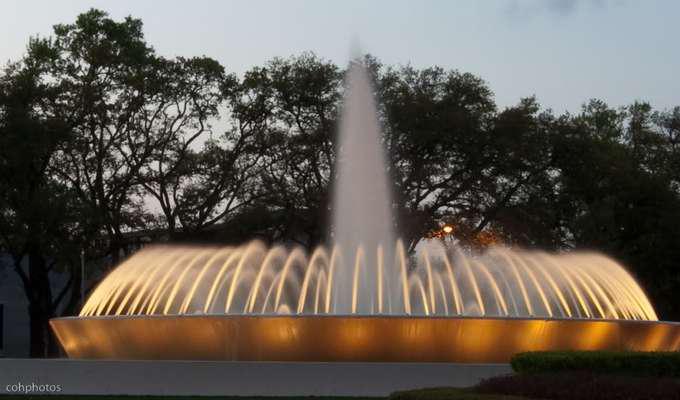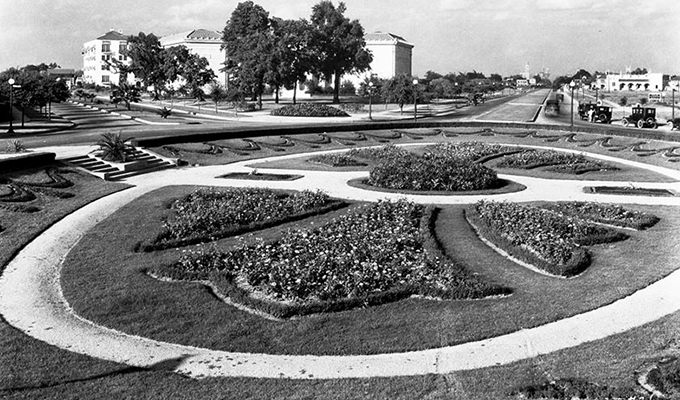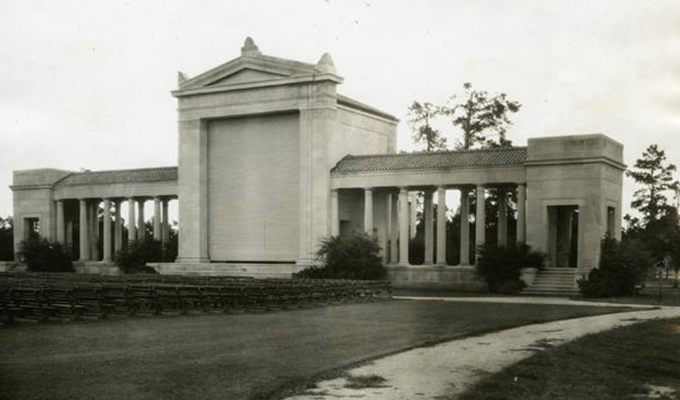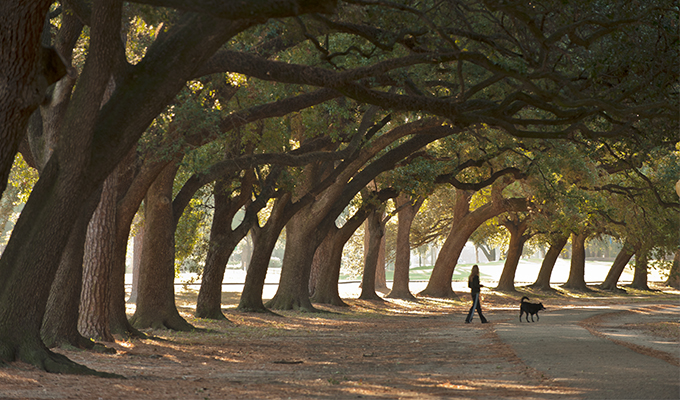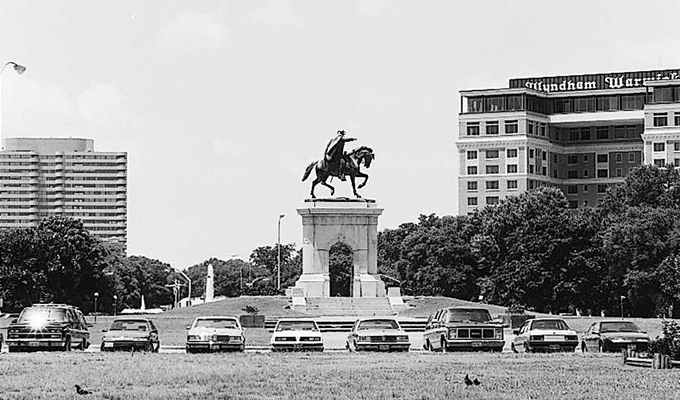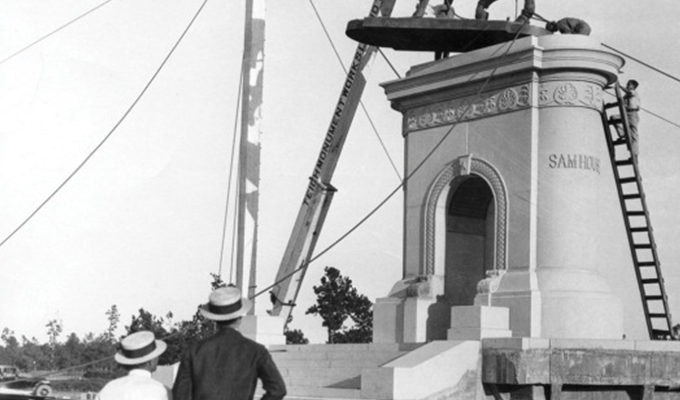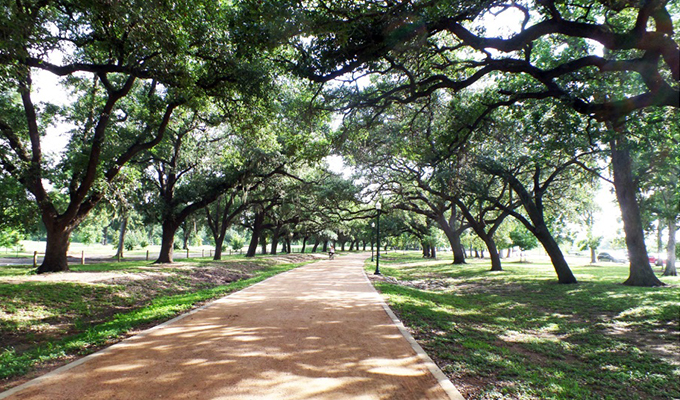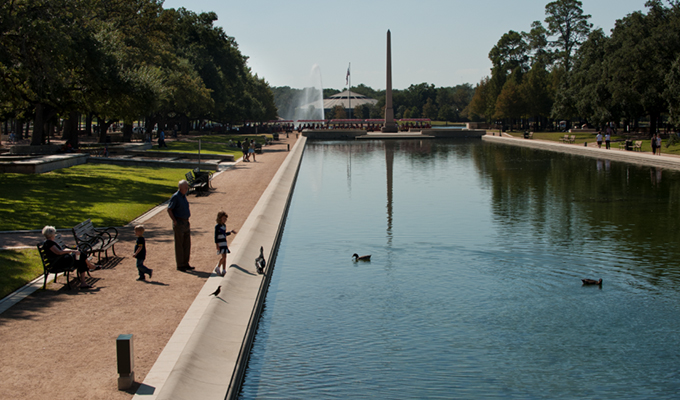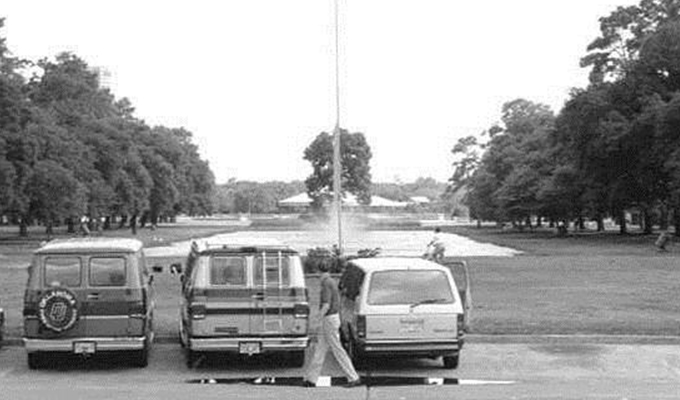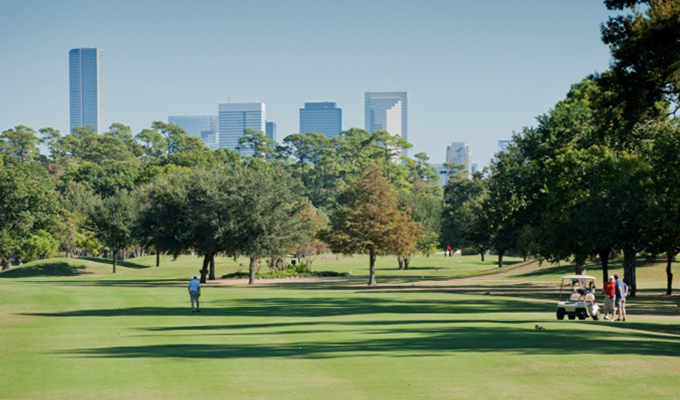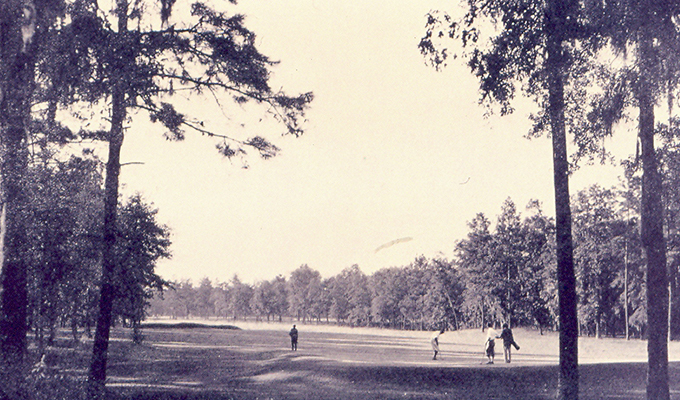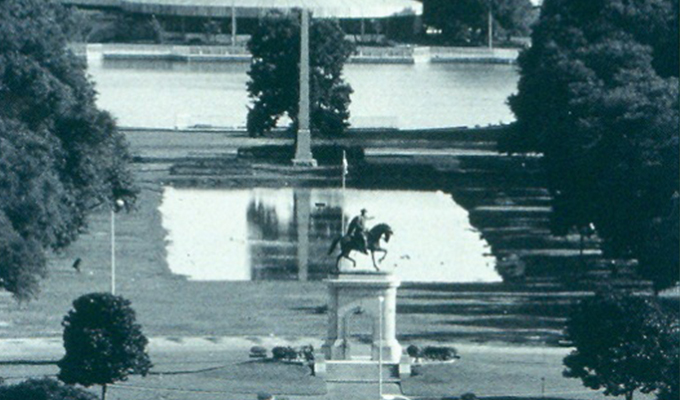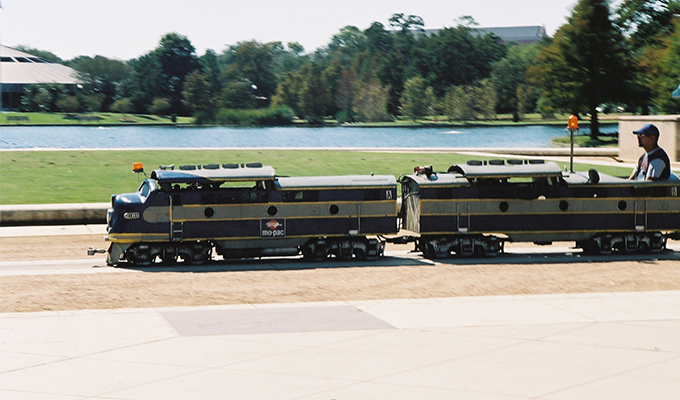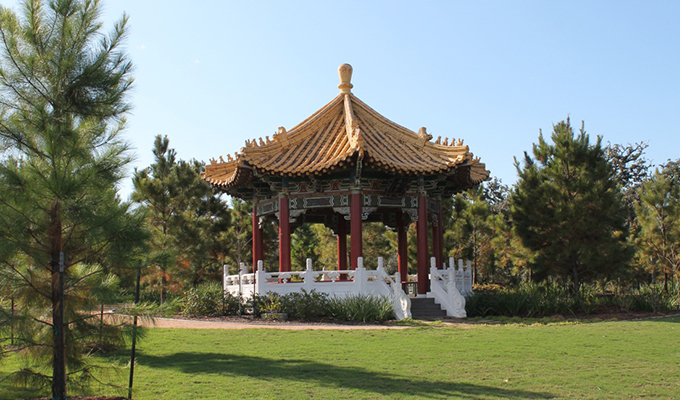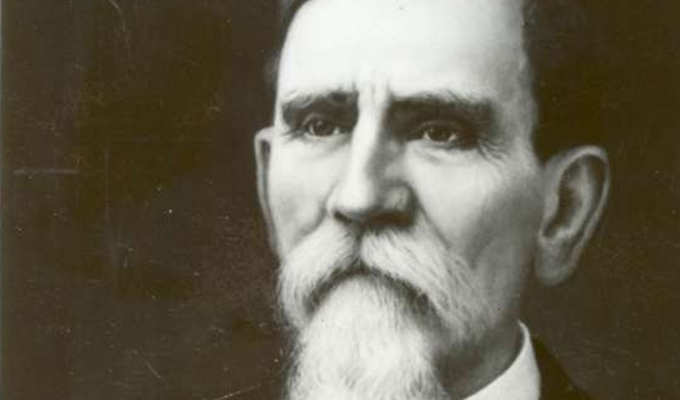Experience the past of Hermann Park with our History Guide! The guide features destinations with historical significance to help you navigate and imagine what the Park once was.
The Mecom Fountain, centrally located at the traffic circle connecting Main Street, Montrose Boulevard, and Hermann Park Drive, marks the location of the Park’s first premier entrance! In 1917, a sunken garden was constructed to greet visitors and signify arrival to Hermann Park. The Mecom Fountain was placed on top of the garden in 1964, creating the iconic landmark we all know and love today.
